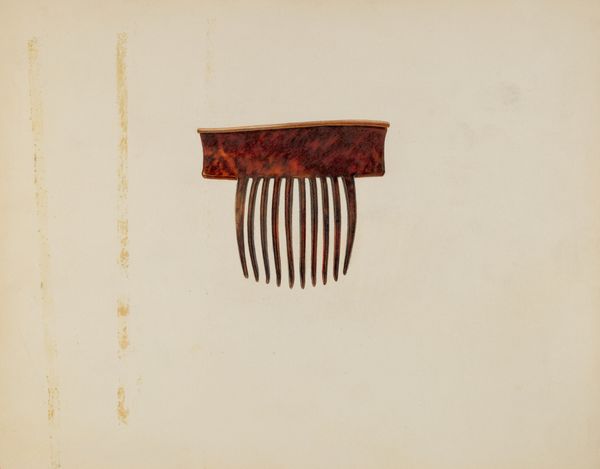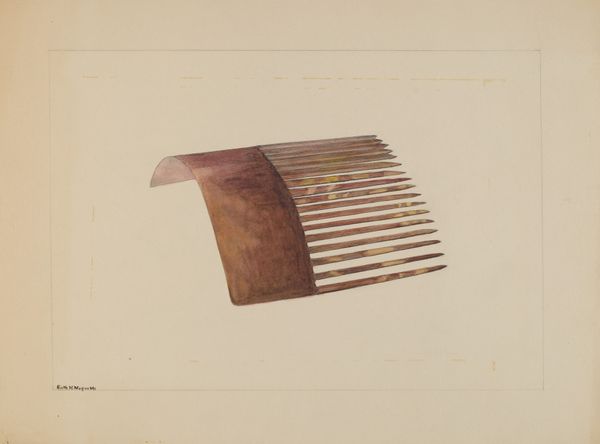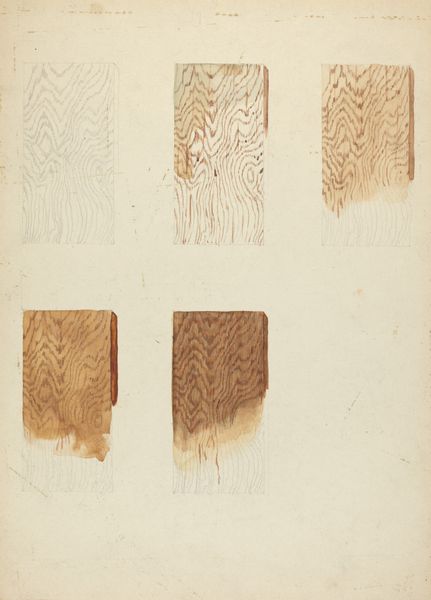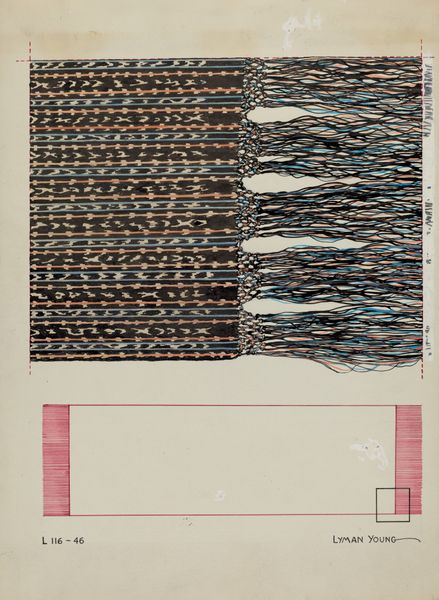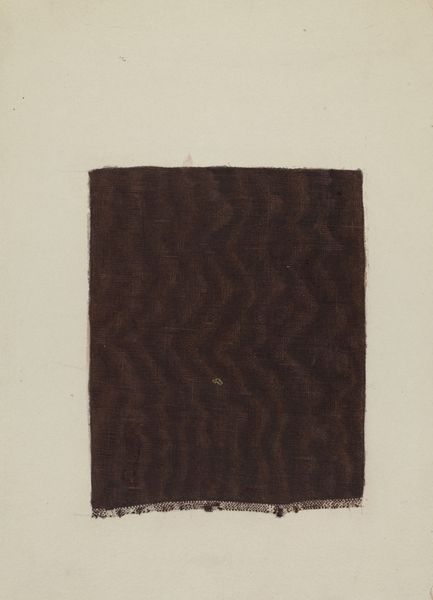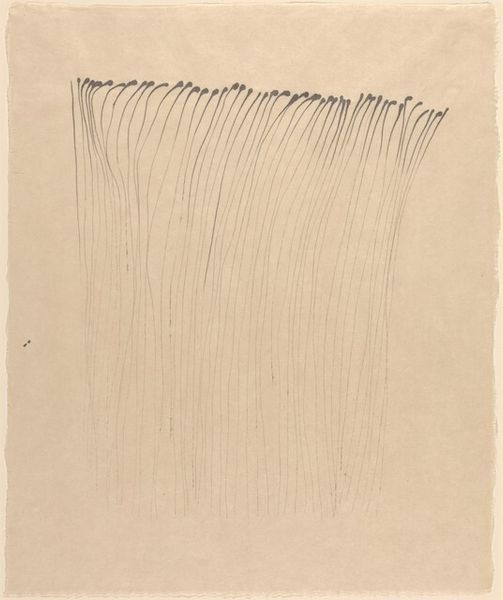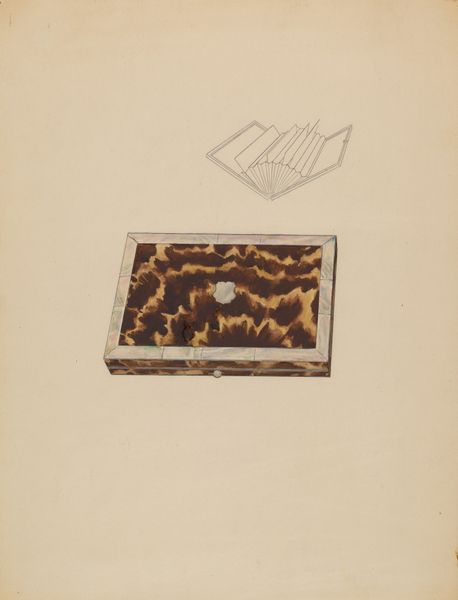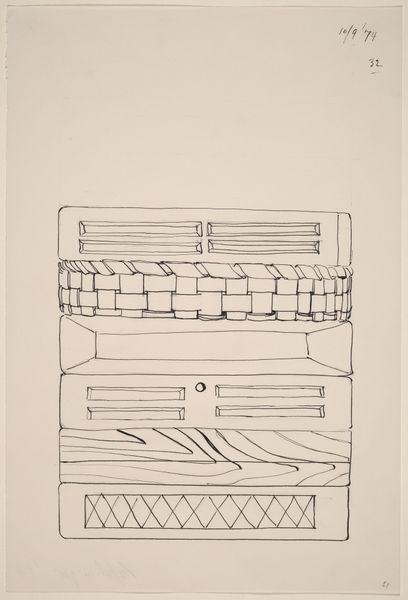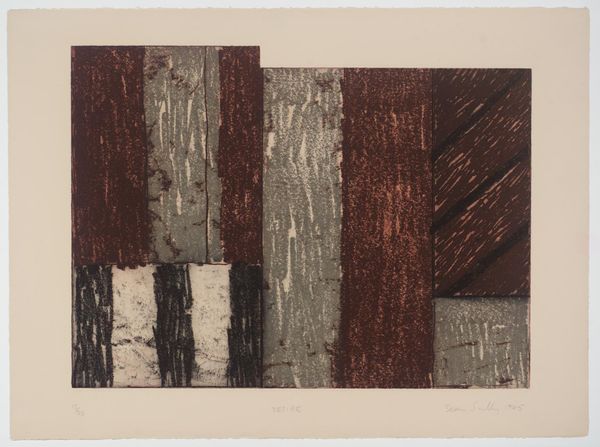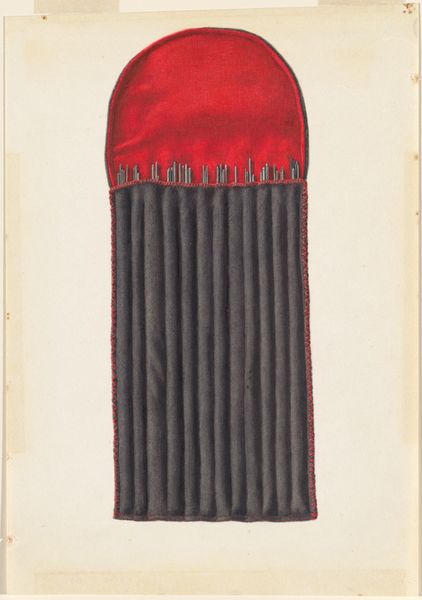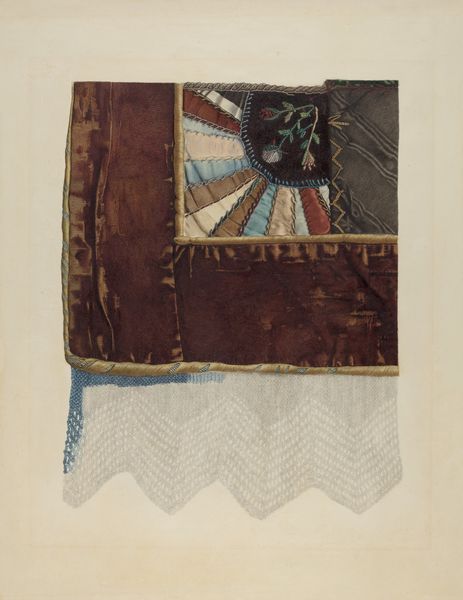
drawing, watercolor
#
drawing
#
watercolor
#
watercolour illustration
#
watercolor
Dimensions: overall: 36.7 x 28.7 cm (14 7/16 x 11 5/16 in.)
Copyright: National Gallery of Art: CC0 1.0
Editor: Here we have John H. Tercuzzi’s "Comb," a watercolour drawing from around 1939. What strikes me is the artist's rendering of what appears to be either horn or tortoiseshell, showcasing an interesting use of this simple material. What stands out to you in this piece? Curator: What interests me immediately is thinking about where this material, likely tortoiseshell or horn as you observed, originates. Consider the systems of labor and global trade that bring it to Tercuzzi’s hand in the 1930s. Editor: So, the means of procuring the raw material are significant? Curator: Exactly. The extraction, processing, and distribution of this material reflect social and economic power dynamics. Someone, somewhere, extracted this resource. Who benefits from this labor? Is Tercuzzi engaging in an uncritical consumption, or is there an awareness embedded in the act of depicting this object? Editor: It does seem simple on the surface. So you’re thinking about it less as a simple drawing and more about its ties to larger industrial and colonial practices? Curator: Precisely. And also, consider its utility as an everyday object, reproduced as "art" by the artist using humble means of production. It pushes the idea of high art and craft. It forces one to consider both value and commodity. Is it an interesting idea? Editor: Yes, that’s really shifted my perspective! I was thinking only of its formal qualities but now it seems connected to so much more. Curator: These mundane objects often are if we’re willing to look. I find the tension fascinating.
Comments
No comments
Be the first to comment and join the conversation on the ultimate creative platform.
